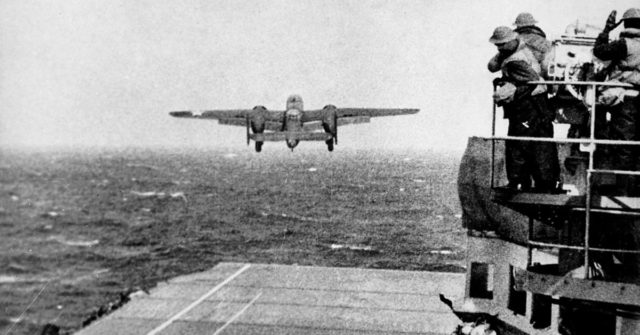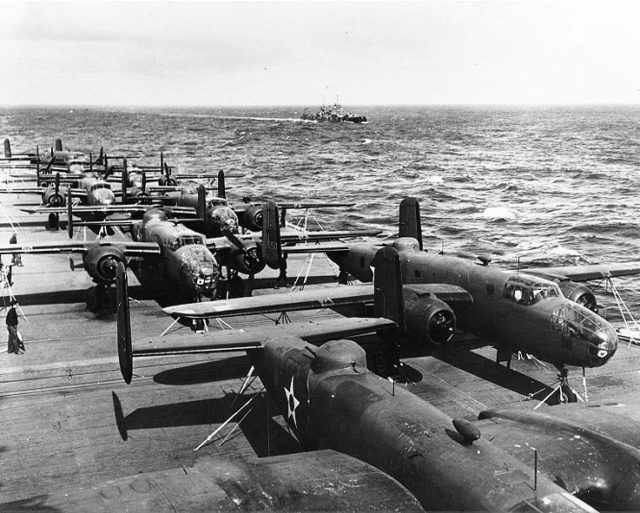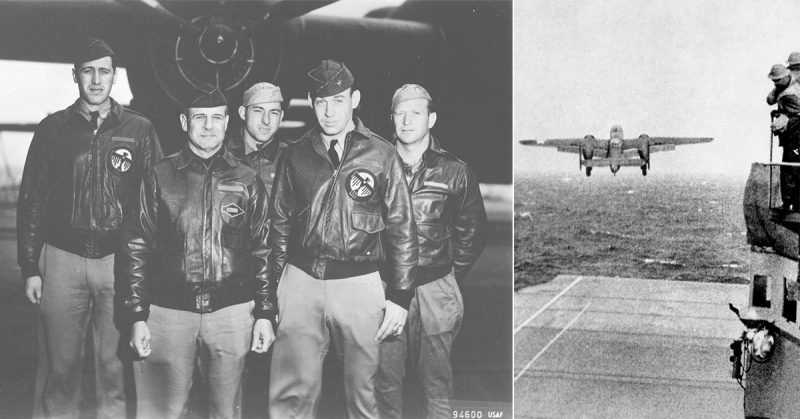At Perry-Houston County Airport in Georgia, a B-25 Mitchell bomber called Show Me , recently, sat at the end of a Runway 36. Aboard was Richard E. “Dick” Cole, 101, the last living Doolittle Raider. In 1942 he was co-pilot of one of the 16 bombers.
During the raid on Japan four months after the attack on Pearl Harbour in 1941, the planes took off from the aircraft carrier USS Hornet.
Eighty men volunteered for the mission that turned out to be a one-way trip. The plan was for the Mitchell’s to bomb five Japanese cities then fly on to China out of the enemy’s reach.
Consequently, the planes would have to depart unexpectedly farther than planned from Japan. The decision was something of a gamble. The increased range meant planes and crews lacked sufficient fuel to guarantee a landing in China. Japan was 650 miles distant.
Owned by the Commemorative Air Force, Show Me exhibits itself at air shows across the country to assist the Disabled American Veterans in having a voice.
Of almost 10,000 made, Show Me is one of less than 50 Mitchell’s that are still airworthy.
The greatest risk for a pilot getting his plane airborne was engine failure at reduced speed causing the takeoff to be aborted or else the machine could veer into important structures on the carrier.
Ordinarily, the B-25 needs 2,000ft of runway length. However, on the Hornet that was restricted to 300 feet. If not, they would drop off the end and land in the ocean. Through training, pilots learned to take off at 75 mph using only 250 feet of runway if necessary.
He remembered thinking they had left civilization behind. The short-wave radio only had a range of 45 miles, and they were going to be farther away.

Doolittle flew as low as 200 feet from the ocean at approximately 190 mph. Some pilots flew at an astounding 50 feet.
Around noon, Cole’s crew and Doolittle were the first to arrive in Tokyo. The element of surprise was complete. Despite there being Japanese air cover fighters at a higher altitude, they didn’t see them.
A target was found by bombardier Fred Braemer. Doolittle climbed to 1,500 feet and ordered bombs away.
The 16 planes struck military installations, oil storage depots, and factory areas. Even though there was considerable anti-aircraft fire, the bombers escaped unscathed. The raid made a mockery of Japanese claims that the country was immune from attack. It raised the morale on Americans considerably.

But they still had to reach China, and they were low on fuel. Worryingly, darkness had descended, and they were encircled by an energetic storm. Since finding a secure landing was not an option, Doolittle ordered his crew to bail out close to 10,000 feet while moving at 166 mph.
In total 11 crews bailed out and four planes made crash landings. One plane flew to Russia. Three of the 80 raiders were killed, eight were apprehended, one died from lack of food in a Japanese POW camp and three were executed by the Japanese, CNN.com reported.
Just under a month ago the Air Force paid tribute to the mission by naming its new extended range B-21 bomber The Raider. It’s expected to fly in the middle of the 21st century.
